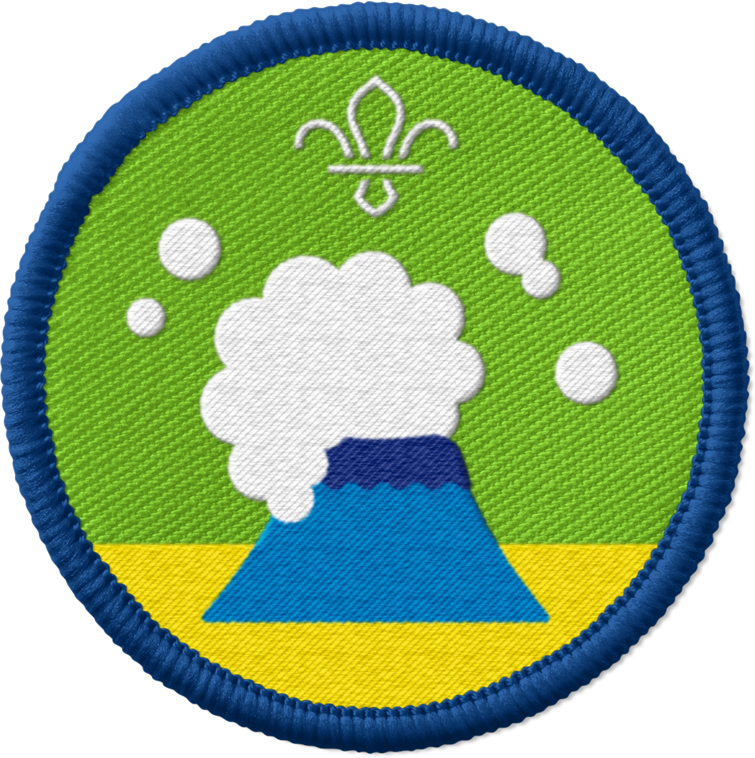Time for slime
You’ll need
- Food colouring
- Measuring jug
- Large saucepan
- heatproof whisk
- Heatproof bowl
- Tablespoon
- Ground psyllium husks
- Hub (or microwave)
Before you begin
- You may want to run this experiment as one of a few bases, especially if you don’t have enough hobs or space for everyone to do this at once. If you’re running two or three experiments at the same time, put the equipment each needs on a table and make sure there’s an adult at each table.
- Plan ahead and let everyone know what equipment they’ll need to do this activity online at home. You could think about safely delivering the equipment to group members if it’d be appropriate and manageable for your group.
- Ask parents or carers to support everyone to make their slime.
- Check out the advice on using Zoom and other popular digital platforms and the guidance on being safe online.
Make the slime
- Split into small groups. Each group needs an adult and access to a hob.
- Each group should measure 220ml of water and pour it into a large saucepan.
- They should add two tablespoons of ground psyllium husks to the water.
Using psyllium husks makes non-toxic slime. - They should add food colouring drop by drop until the mixture is the colour they want.
- An adult should help the group put the pot on a hob and gently heat it, stirring continuously.
- The mixture shouldn’t take long to thicken, so with the help of the adult the group should keep a close eye on it and turn off the heat when it reaches a slimy consistency.
If you’re using a microwave instead, mix the ingredients into a microwave proof bowl and heat it for between five and seven minutes. Keep a close eye on it, as the slime can easily overflow. Stop the microwave whenever you see the mixture begin to bubble excessively.
- The adult should help the group transfer the slime to a heatproof bowl and leave it to cool.
Get gooey
- Once the slime is totally cool, everyone should divide the slime between the group members. People could try squeezing, shaping, and pulling their slime.
- Groups could share and compare their slime. Some will probably be runnier and others will be thicker. People should talk about why, and how changing the amount of different ingredients may change the slime.
Reflection
This experiment needed everyone to use science skills such as following instructions and making adjustments based on what they observed. Everyone should talk about how they made the slime and the different ways it changed as it cooked and cooled. What was it like watching the watery mixture turn to slime – was it what people expected to happen? Did anyone add more water or psyllium husks as their mixture heated to make it thinner or thicker? Can anyone think of any other ingredients or mixtures that change when they’re heated? People may think about ice melting, or custard powder and water thickening. People may even think about how jelly dissolves in hot water then sets to be wobbly!
Safety
All activities must be safely managed. You must complete a thorough risk assessment and take appropriate steps to reduce risk. Use the safety checklist to help you plan and risk assess your activity. Always get approval for the activity, and have suitable supervision and an InTouch process.
- Science
Supervise young people, and only do science activities that are advised and age appropriate for your section. Test activities first, to make sure you’re confident you can lead them safely. Use protective clothing where necessary.
- Food
Remember to check for allergies, eating problems, fasting or dietary requirements and adjust the recipe as needed. Make sure you’ve suitable areas for storing and preparing food and avoid cross contamination of different foods. Take a look at our guidance on food safety and hygiene.
- Cooking
Teach young people how to use cooking equipment safely. Supervise them appropriately throughout. Make sure it’s safe to use and follow manufacturers’ guidelines for use.
- Experiment with different amounts of different ingredients to create runnier or stickier slime.
- You could create sensory slime by adding fragrances to the mixture before you heat it. You could also knead cake decorations (such as hundreds and thousands or silver balls) into cooled slime.
No one has to touch the slime if they don’t want to – they can still help add the ingredients, describe what happens, and see what the slime looks like. You could also offer gloves for anyone who doesn’t want the slime to touch their skin.
All Scout activities should be inclusive and accessible.


